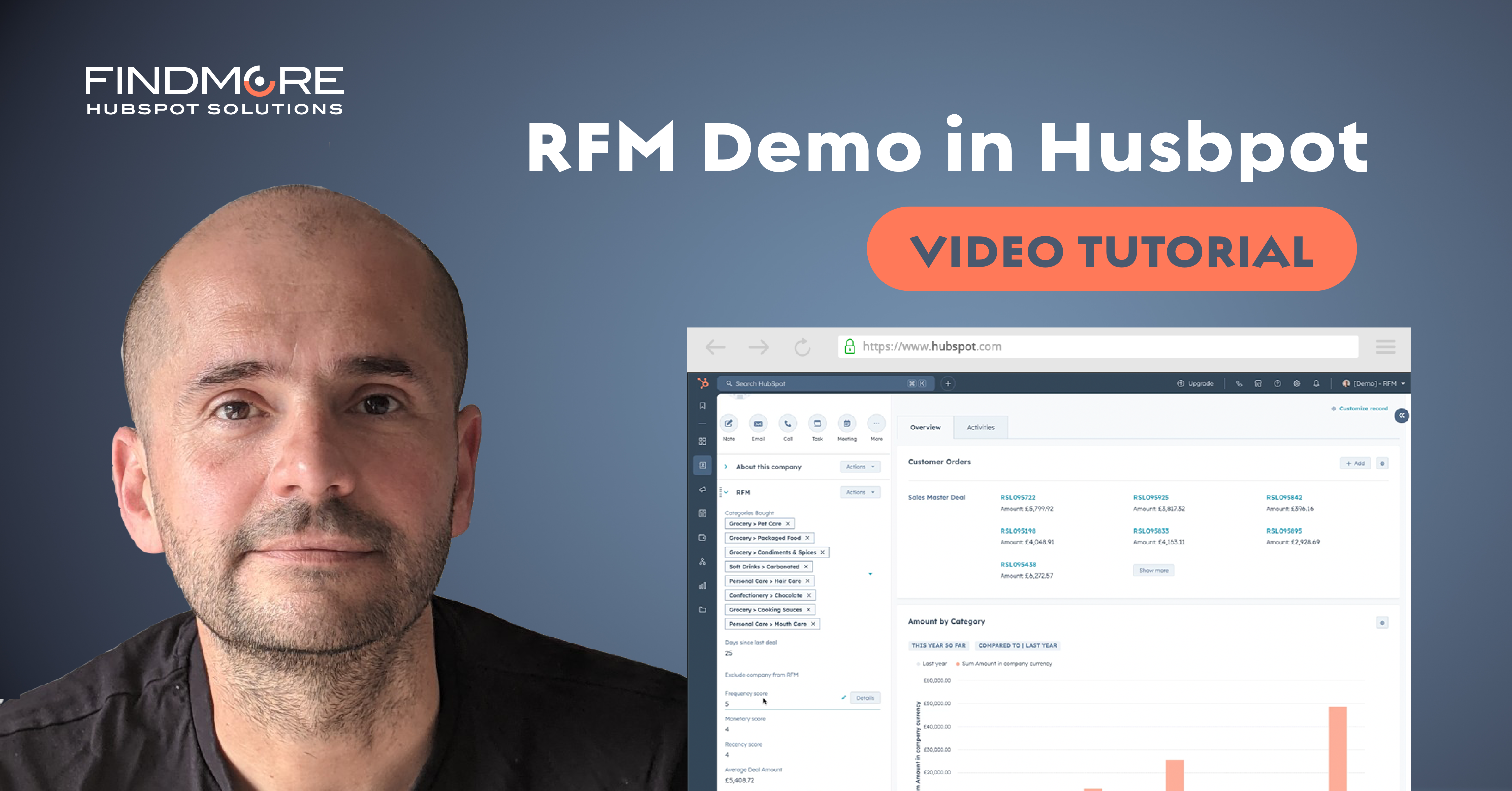Customer Relationship Management (CRM) systems are essential for managing customer interactions and driving business success. However, to truly maximise CRM efficiency, integrating advanced analytical techniques like RFM (Recency, Frequency, Monetary) analysis is crucial. This post explores how you can leverage RFM analysis within HubSpot to boost CRM efficiency, improve customer segmentation, and enhance your marketing and sales strategies.
Understanding RFM Analysis
RFM analysis is a proven strategy for segmenting customers based on purchasing behaviour. It assesses three critical dimensions:
- Recency: How recently a customer made a purchase.
- Frequency: How often a customer makes purchases.
- Monetary Value: How much a customer spends.

Businesses can gain deep insights into customer engagement, loyalty, and value by scoring customers in these areas. RFM analysis applies to large organisations and offers significant benefits to small and medium-sized enterprises (SMEs).
Applying RFM Analysis in HubSpot
Integrating RFM analysis can streamline the acquisition and retention processes for businesses using HubSpot. Here's how to apply RFM analysis to different customer lifecycle stages.

Acquisition Sales Process Stages:
- Initial Engagement: Capture leads through marketing campaigns and initial outreach.
- Product Presentation: Present product offerings through demos or presentations.
- Sample Stage: Provide samples if applicable to build customer trust.
- Contract Negotiation: Negotiate terms and finalise the contract.
- Initial Order Placed: Confirm the first purchase.
Order Flow Stages:
- Order Placed: Customer places an order.
- Order Being Processed: The Order is processed in the system.
- Order in Delivery: Order is dispatched for delivery.
- Order Delivered: Customer receives the Order.
For repeat business involving ongoing sales or account management, a traditional pipeline might look like this:
- Qualified: Lead is qualified for potential business.
- Needs Identified: Specific needs and requirements are identified.
- Proposal Sent: A proposal is sent to the customer.
- Negotiation: Terms are negotiated to close the deal.
Once you identify the pipeline stages representing revenue generation in HubSpot, you can apply RFM analysis.
Calculating RFM Scores in HubSpot

To implement RFM analysis, your customer base is assessed across three dimensions:
- Recency: How recently did they buy from you, scoring from 1 to 5?
- Frequency: How frequently they buy, scored from 1 to 5.
- Monetary Value: How much they've spent, scored from 1 to 5.
These calculations typically cover a period of the last 24 months. Based on these scores, you can categorise customers into the following segments:
- Champions: Bought recently, Order often, and spend the most.
- Loyal: Orders regularly and are responsive to promotions.
- Potential Loyalists: Recent customers who spent significant amounts.
- New Customers: Made their first purchase recently.
- Promising: Potential loyalists a few months ago, spend frequently but haven't purchased recently.
- Need Attention: Core customers whose last purchase was over a month ago.
- About to Sleep: Made a purchase a long time ago but recently engaged with your site or emails.
- Cannot Lose Them: Made large, frequent orders but have yet to return for a long time.
- At Risk: Similar to 'Cannot Lose Them' but with lower spending and frequency.
- Hibernating Customers: Made infrequent, small purchases and haven't bought in a long time.
- Lost: Made their last purchase a long time ago and haven't engaged recently.
Managing RFM Segments in HubSpot
In HubSpot, RFM segments can be managed automatically using dynamic lists. This automation allows for easy adjustment of RFM combinations and ensures that segments are updated based on the latest data.
- Dynamic Lists: Create lists that automatically update based on RFM criteria.
- Frequency of Calculation: Adjust the frequency of RFM score calculations to keep segments current.
Leveraging RFM Segments for Marketing and Sales

RFM analysis enhances your marketing and sales strategies by enabling targeted, data-driven actions.
Build Ad Lookalike Audiences
Use RFM segments to create lookalike audiences for your ads. This helps in targeting potential customers who resemble your best-performing segments.
Target Customers About to Churn
Identify customers in segments like 'At Risk' and 'Cannot Lose Them' and implement targeted retention strategies. This might include personalised offers, loyalty rewards, or re-engagement campaigns.
Use Marketing Automation
Automate marketing actions based on RFM segments. For example, trigger email campaigns for 'Promising' customers to encourage repeat purchases or special promotions for 'Champions' to reward their loyalty.
Trigger Sales or Account Management Activities
Set up automation to alert sales or account managers when specific actions are needed. For instance, if a customer is reaching the average time between orders, the account manager can reach out to prevent churn.
Product Mix and Segmentation

Categorising and segmenting customers by product preferences allows for more personalised marketing and improved engagement.
Monitor Engagement by Product Category
Track how different segments engage with various product categories and automate marketing efforts accordingly. For example, customers interested in a particular product line can receive targeted promotions related to that category.
Create Focused Ad Campaigns
Develop ad campaigns focused on specific products for certain RFM segments. This ensures that your advertising efforts are relevant and more likely to convert.
Sales and Account Management Automation

Automating tasks within sales and account management ensures timely and effective customer interactions.
Action Triggers
Set triggers for account managers to act when customers are at risk of churning or when they have low engagement scores. This proactive approach helps in retaining customers and boosting their lifetime value.
Nurture Processes
Implement nurture processes for low-value customers to gradually increase their engagement and spending. Automated workflows can help in consistently engaging these customers over time.
Churn Prevention
Regularly monitor RFM segments to identify customers at different stages of the lifecycle. By knowing when to reach out to customers moving through their RFM segments, you can prevent churn and maintain a steady flow of orders.
Conclusion
Leveraging RFM analysis within HubSpot can significantly boost your CRM efficiency by providing actionable insights into customer behaviour. By categorising customers based on their recency, frequency, and monetary value, you can tailor your marketing and sales strategies to better meet their needs. This data-driven approach enhances customer engagement and retention and maximises your return on investment. Embrace RFM analysis in HubSpot to transform your CRM into a powerful tool for driving business success.

